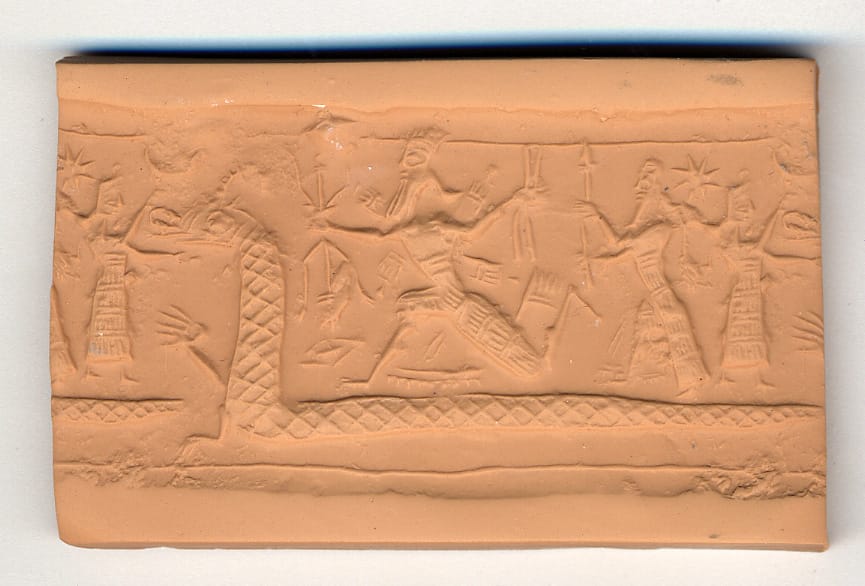Tyranny of Wagons
Simplified expedition logistics for a more civilized fantasy adventure game.

The supply train for an expedition in the pre-rail era is limited by the fact that the pack animals themselves consume food. The relationship between cost and scale (of both the animals and edible loads) approximates a binary logarithm: each linear increase in range (say, one week) is associated with doubling the total cost and scale of the expedition. The interested reader is directed to the following if they wish to see the background to this principle:
- Collections: Logistics, How Did They Do It, Part I: The Problem (Bret C. Devereaux)
- The Tyranny of the Wagon Equation (Dylan Black)
- A Survey of Overland Travel (Beau Rancourt)
While I very much enjoyed Rancourt's tour of adventure game overland travel procedures, I was not quite satisfied by the resulting synthesis as it does not suit my predilections. I prefer minimal record-keeping, and elimination of false choices regarding solvable problems: meaning the optimal choice may not be obvious, but a strictly (near-)optimal choice does exist, and may be determined with some tedious analysis. Any procedure of accounting per ration and mule falls foul of my aims, so I sought to tackle this top-down instead.
Note that in the original games a week of rations costs 5-15 GP (from standard to iron), mules cost 20-30 GP, and a cart or wagon costs 100-200 GP. Individual adventurer's can reasonably carry food and supplies for one week of round travel, but beyond that will need to invest in transport of goods, subject to the tyranny of the wagon equation.
The main other binary logarithm in fantasy adventure games is the XP required per level. The canonical XP table is the Fighter's (see one rendition below), and this provides a rough estimate of capital wealth by level, given that the majority of XP will have been earned from XP for GP. Hence we arrive at a simple abstraction:
| Level / Range (weeks) | XP | Expedition GP |
|---|---|---|
| 1 | 0 | 10 |
| 2 | 2k | 20 |
| 3 | 4k | 40 |
| 4 | 8k | 80 |
| 5 | 16k | 160 |
| 6 | 32k | 320 |
| 7 | 64k | 640 |
| 8 | 125k | 1,250 |
| 9 | 250k | 2,500 |
| 10 | 500k | 5,000 |
Lifestyle & Market Availability
I then considered how to extend this idea to another couple of areas of fiddly economics: upkeep (lifestyle) costs for player characters covering room and board, as well as determining what scale of transactions each settlement can afford (market availability).
Lifestyle could be similarly set as 1% of Fighter XP per month (the same to fund an expedition of equal level). This represents the natural rise in indulgence and standard of living commensurate with level titles, and is a necessary cost to obtain the social benefits of higher station. You could still choose to live on the streets and hoard your wealth, but you shouldn't want to. Though these prices seem high at first blush, they are in accord with the cost of retaining an alchemist or sage (1,000-2,000 GP per month), so they are not really out of line.
For further mechanical inducement, I would like to also try setting natural healing as 1 HP per level of lifestyle, justified as increasing comfort and safety granting more rapid recuperation (and with a side benefit of preventing high level characters needing weeks of bed rest between adventures).
For market availability, this will be somewhat more arbitrary, but let's establish the following convention:
| Settlement | Souls | Level Equivalent | Market Cap (GP) |
|---|---|---|---|
| Roadhouse | ~10 | 0 | 10 |
| Village | ~100 | 1 | 20 |
| Town | ~1,000 | 4 | 80 |
| City | ~10,000 | 8 | 1,250 |
| Metropolis | ~100,000 | 10 | 5,000 |
This can be used as follows: each month a settlement can be expected to buy or sell each individual good in proportion to the market cap. So a village may have only two swords (2 x 10 GP), or a roadhouse five flasks of burning oil (5 x 2 GP). Any items more expensive than the cap might be strictly unavailable, or else if feasible have only a proportional chance of being available each month; a suit of chainmail (40 GP) has a 1-in-2 chance per month of being obtainable in a village, or a small sailing ship (5,000 GP) has a 1-in-4 chance per month in a city.
Hence only common gear and weapons are usually available in villages, all arms and armour but not expensive specialists or land vehicles in towns, and practically everything in a city (with the exception of strongholds and seafaring vessels, though these would usually not be obtained via trade on the open market anyhow).
Regarding expeditions this similarly limits the supply available based on where you set out from: a town can only supply enough to make a 4-week return trip, while a metropolis can provide up to 10-weeks (or perhaps more, given extra months to prepare and secure additional supplies). For sake of play I would judge this per adventurer rather than the expedition as a whole, so though you pay more to bring retainers along, they won't further limit your expedition range.
I Want It Darker
I care more about playability than rigorous economic integrity in my own games, and actually find the approach taken in Knave 2E to be preferable (with just loose guidelines for equipment prices and overall much less growth in purchasing power). For Knave 2E, or just a much grittier old-school game, I would increase this by a factor of x10, up to 10% of Fighter's XP per level in coin, for all of expedition costs and lifestyle and market availability. Given a duke or prince lives on about 60,000 coins per month this is not unreasonable!
Assuming treasure awards from adventuring are kept at expected pace, this puts the adventurers on a much shorter 'burn time' between payoffs - each month of downtime or week of campaigning is going to cost 10% of their expected capital, so after 10 intervals they will be broke (and hence must subsist with no social clout, no natural healing, and risk of disease). Is this the fantasy adventure game equivalent of Traveller being driven by player debt?




